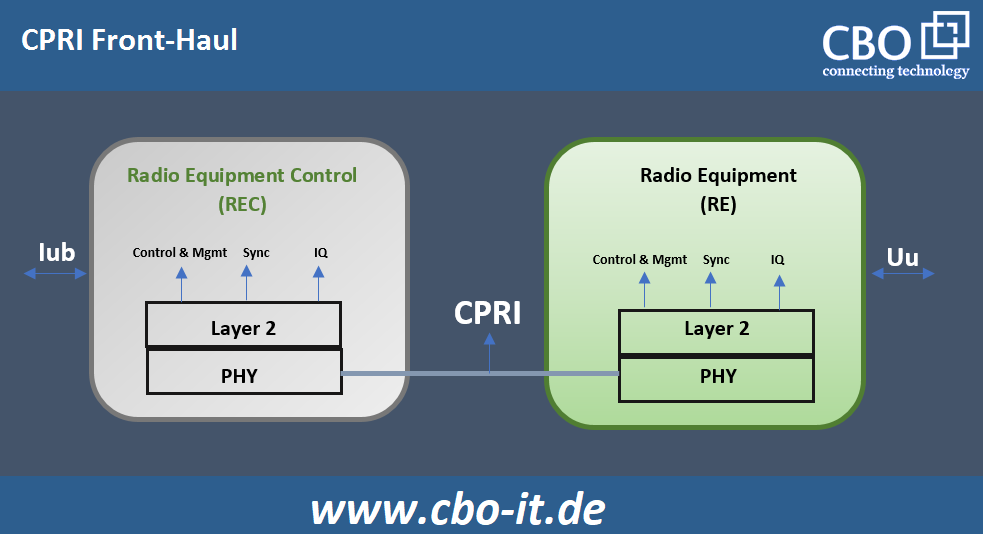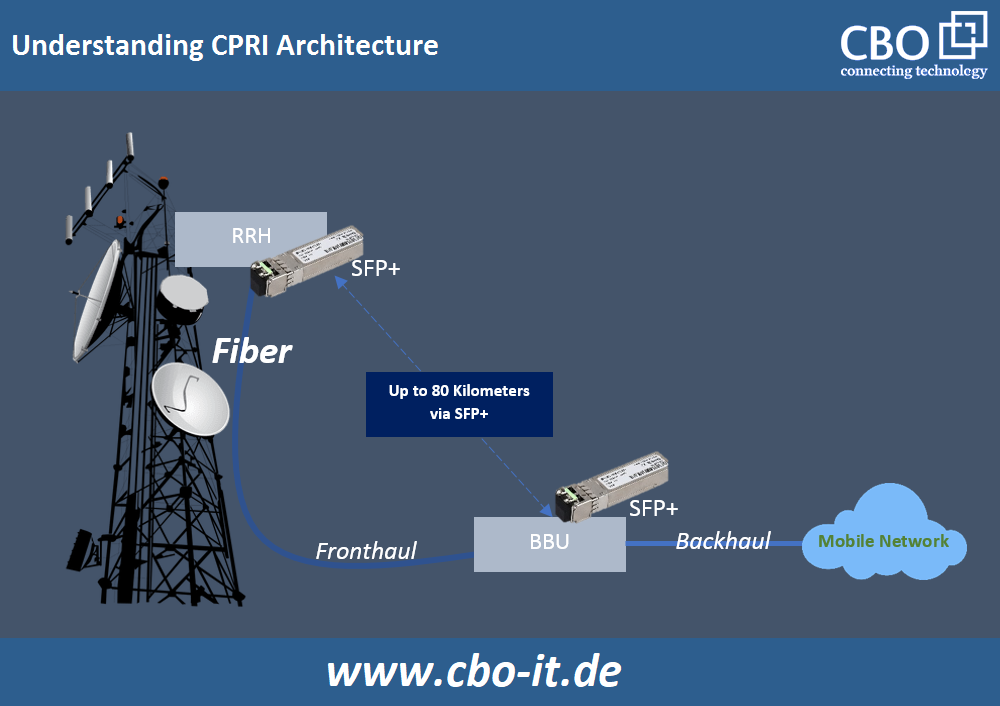Zu den Unternehmen, die bei der Definition und Pflege der CPRI-Spezifikation zusammenarbeiten, gehören Nokia, NEC, Huawei und Ericson. Die derzeit verfügbare Version von CPRI ist Version 7.0, während eCPRI eine erweiterte Version von CPRI ist, die für 5G-Netze entwickelt und standardisiert wird. Die neueste CPRI-Version bietet eine maximale Leitungsbitrate oder Betriebsgeschwindigkeit von bis zu 24,3 Gbit/s und kann daher jetzt optische Transceiver vom Typ SFP28 mit 25 Gbit/s aufnehmen.

Zu den Unternehmen, die bei der Definition und Pflege der CPRI-Spezifikation zusammenarbeiten, gehören Nokia, NEC, Huawei und Ericson. Die derzeit verfügbare Version von CPRI ist Version 7.0, während eCPRI eine erweiterte Version von CPRI ist, die für 5G-Netze entwickelt und standardisiert wird. Die neueste CPRI-Version bietet eine maximale Leitungsbitrate oder Betriebsgeschwindigkeit von bis zu 24,3 Gbit/s und kann daher jetzt optische Transceiver vom Typ SFP28 mit 25 Gbit/s aufnehmen.
Architectural advantages of the CPRI

CPRI uses a distributed architecture. The base stations, which consist of RECs, are connected to remotely controlled radios RRH or REs via a fiber optic cable that transmits the CPRI data. This architecture is more cost-effective for service providers as it allows base stations to be deployed in better environments that are closer to power and other utilities. At the same time, in remote locations and poor environments, only the front-end radio is installed. In typical networks, multiple remote front-end radios can be connected to a base station via a network topology.
Short distance vs. longer distances CPRI
CPRI connections are normally established via fiber optic cables, which are either:
Short-haul connections: These connections run up or down the tower to connect the baseband unit to the remote radio heads (RRHs). In most cases, the baseband units are located in a cabinet at the bottom of the tower. The remote radio heads, on the other hand, are installed at the top of the building or tower.
Long-haul connections: With these CPRI connections, the BBUs are installed centrally in a base station somewhere in a city. Longer fiber optic cables connect the scattered remote radio heads with the baseband units.
The role of BBUs and RRUs in CPRI networks
BBUs are the underlying processing units and RRUs are the remote radio units. These two types of units are connected to each other via digital optical transceivers. The RRUs transmit digital baseband signals via antennas after radio filtering, frequency conversion and radio amplification.
Advantages of CPRI
- A standardized protocol is provided for different manufacturers of base stations.
- CPRI specificThe CPRI specifications are available to the general public and can be customized by anyone.
- It allows radios to be placed at a great distance (up to several kilometers) from the baseband unit.
- CPRI supports various modulation methods such as QAM.
- These connections can be easily set up using cost-effective SFP and SFP+ modules.
Verfügbarkeit von Hardware für CPRI-Verbindungen
We have a complete range of cost-effective optical transceivers for setting up CPRI-based wireless fronthaul networks. These modules include SFP28, SFP+ and industrial grade SFP. Thanks to the availability of these optical modules, you can opt for either a single fiber or two fibers. The maximum transmission distance that can be achieved with these modules for CPRI connections is up to 80 kilometers.
Conclusion:
CPRI is a cost-effective method for setting up 4G and 5G fronthaul connections. It enables network operators to connect widely dispersed radio units to centrally installed base stations. Although a separate standard is available for 5G, CPRI will continue to play an important role as it connects 4G infrastructure to 5G networks.
 English
English
 Deutsch
Deutsch
 Espaniol
Espaniol










